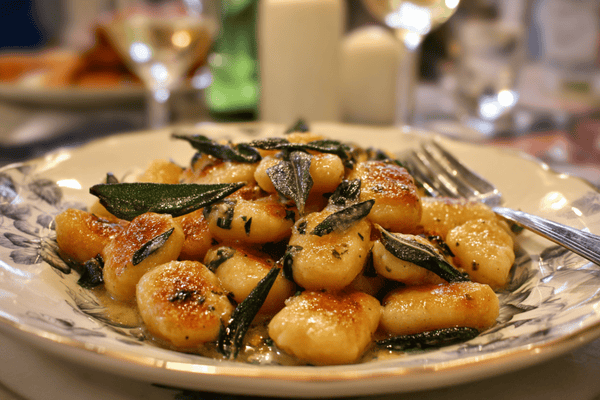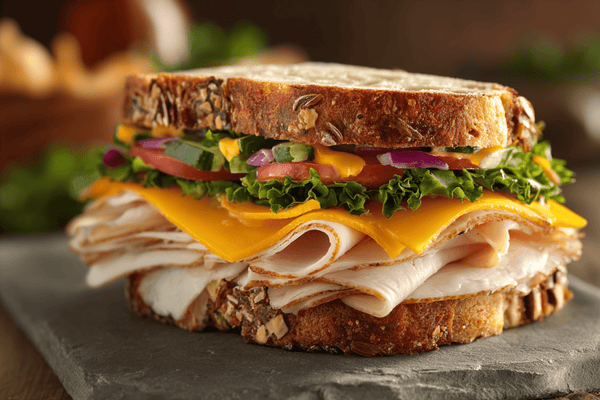
Cooking fish can be a real challenge, especially if you're not using the right pan. From sticking to uneven heating, choosing the right pan is essential to ensure that your fish is cooked to perfection. With so many options available on the market, it can be overwhelming to choose the right one. We've created this comprehensive guide to help you find the best pan for cooking fish.
Table of contents
Materials for fish cooking pans
One of the most important factors to consider when choosing a pan for cooking fish is the material. Different materials have different properties that affect the way your fish will cook. Here's a rundown of the most common materials used for cooking fish:
- Aluminum: Lightweight and heat-responsive, aluminum is a popular choice for cooking fish. It heats evenly, making it easy to control the temperature, and it's also affordable. However, it can scratch easily and react with acidic foods, affecting the taste of your fish.
- Stainless Steel: Durable and easy to clean, stainless steel is another popular choice for cooking fish. It's also resistant to rust and discoloration, making it a great option for long-term use. However, it's also heavy and doesn't conduct heat as well as aluminum, so it may not be the best choice for delicate fish dishes.
- Non-Stick: Non-stick pans are designed to prevent food from sticking, making them ideal for cooking delicate fish. They're also easy to clean and come in various shapes and sizes. However, they can be more expensive than other materials, and the non-stick coating can wear off over time, reducing their effectiveness.
- Cast Iron: Cast iron pans are incredibly durable and versatile, making them a great choice for cooking fish. They retain heat well, so your fish will cook evenly, and they can also be used on the stovetop or in the oven. However, they're heavy and can be challenging to maintain, as they need to be seasoned and cared for properly.
- Copper: Lightweight and heat-responsive, copper is another popular choice for cooking fish. It heats evenly and quickly, making it ideal for delicate fish dishes. However, it's also expensive and can react with acidic foods, affecting the taste of your fish.
Size and Shape: Skillets, Saute Pans, Woks, Griddles, and more
The size and shape of your pan are also important considerations when cooking fish. Different pans have different features that affect how your fish will cook. Here's a rundown of the most common shapes and sizes of pans used for cooking fish:
- Skillets: Skillets are flat, shallow pans that are ideal for cooking fish that needs to be seared or browned. They come in various sizes, from small to large, and are usually made from stainless steel, aluminum, or non-stick materials.
- Saute Pans: Saute pans are similar to skillets, but they have higher sides, making them ideal for cooking fish that needs to be sauteed or pan-fried. They come in a variety of sizes and materials, and they're also great for making sauces and gravies.
- Woks: Woks are large, rounded pans that are commonly used in Asian cuisine. They're great for stir-frying, searing, and sauteing, and they're also ideal for cooking large pieces of fish that need to be flipped and moved around the pan. Woks come in a variety of materials, including carbon steel, cast iron, and non-stick, and they can be used on the stovetop or in the oven.
- Griddles: Griddles are large, flat pans that are usually used for cooking pancakes, burgers, and other flat foods. They can also be used to cook fish, especially if you want to cook multiple pieces. Griddles come in a variety of materials, including cast iron, stainless steel, and non-stick, and they're often used on the stovetop or in the oven.
- Fish Poachers: Fish poachers are specialized pans that are designed specifically for cooking fish. They have a shallow basin and a lid, which helps to keep the fish moist and flavorful as it cooks. Fish poachers come in a variety of sizes and materials, and they're often made from stainless steel or aluminum.
Features: Handles, Lids, Induction Compatibility, and more
In addition to the material, size, and shape of your pan, there are also several other features to consider when choosing a pan for cooking fish. Here's a rundown of some of the most important features:
- Handles: Handles can be made from a variety of materials, including stainless steel, silicone, or plastic. They can be attached to the pan with screws, rivets, or welding, and they should be sturdy and comfortable to hold. When choosing a pan with handles, consider the size and weight of the pan, as well as your comfort and ability to maneuver the pan.
- Lids: Lids are a great feature for pans used for cooking fish, as they help to keep the fish moist and flavorful. Lids can be made from glass, stainless steel, or other materials and should fit securely onto the pan. Consider the type of lid that will best suit your needs, whether it's a lid with a tight seal or one that allows steam to escape.
- Induction Compatibility: If you have an induction cooktop, it's important to choose a pan that's compatible with induction cooking. Some pans, such as cast iron and stainless steel, work well on induction cooktops, while others, such as aluminum and copper, do not. Before choosing a pan, ensure it's compatible with your cooktop and will work effectively with your induction cooking system.
- Other Features: Some pans for cooking fish come with additional features, such as non-slip grips, integrated thermometers, and more. Consider what features are important to you and what will help you cook your fish to perfection.
| Materials | Features |
|---|---|
| Stainless Steel | Durable, Good heat conductivity, Dishwasher safe |
| Cast Iron | Durable, Good heat conductivity, Hand wash |
| Non-Stick | Easy to clean, Even heat distribution, Not oven safe |
| Aluminum | Good heat conductivity, Lightweight, May react with acidic foods |
| Copper | Excellent heat conductivity, Requires special maintenance |
| Ceramic | Non-reactive, Easy to clean, May scratch easily |
This table lists the various materials used in pans for cooking fish and their key features. When deciding on a material for your pan, consider factors such as durability, heat conductivity, and ease of cleaning.
Some materials, such as stainless steel and cast iron, offer excellent heat distribution and are very durable, but may require more maintenance in terms of cleaning.
Other materials, like non-stick and ceramic, may be easier to clean but may not offer the same level of heat distribution. Ultimately, the choice of material will come down to personal preference and cooking needs.
Frequently Asked Questions (FAQ)
Q;What is the best material for cooking fish in a pan?
A:The best material for cooking fish in a pan depends on your personal preferences and cooking style. Stainless steel and cast iron are popular choices because they heat evenly and can be used on a variety of cooktops, including induction. Non-stick pans are also a great option, making it easy to flip and remove the fish without sticking to the pan.
Q:Can I cook fish in a non-stick pan?
A:Yes, you can cook fish in a non-stick pan. Be careful not to use metal utensils, as they can scratch the non-stick surface. Use silicone or wooden utensils, and be gentle when flipping the fish to avoid damaging the non-stick coating.
Q:Can I cook fish in an oven-safe pan?
A:Yes, you can cook fish in an oven-safe pan. Simply place the pan in the oven and bake the fish to your desired doneness. Some pans, such as cast iron and stainless steel, are versatile and can be used on the stovetop and in the oven, while others, such as aluminum, may not be suitable for high-heat oven cooking.
Q:Do I need a lid when cooking fish in a pan?
A: A lid can be helpful when cooking fish in a pan, as it helps to keep the fish moist and flavorful. If you're using a lid, choose one that fits securely on the pan and allows some steam to escape, if desired.
A:How do I clean my pan for cooking fish?
Q: The best way to clean your pan for cooking fish depends on the material. Cast iron and stainless steel pans can be cleaned with hot, soapy water and a non-abrasive scrubber. Non-stick pans should be cleaned gently with a soft sponge and mild detergent. Always follow the manufacturer's instructions for cleaning your pan, and avoid using harsh chemicals or abrasive scrubs that can damage the surface.
Conclusion
Cooking fish in a pan is a simple and delicious way to enjoy this healthy and flavorful food. Whether you're looking for a pan for searing, sauteing, or stir-frying, there's a pan out there that will suit your needs and cooking style. Consider each pan's material, size, shape, and features, and choose the one that will help you cook your fish to perfection. Whether you're a seasoned chef or just starting, a great pan for cooking fish is an essential tool for your kitchen.


